“Someday I’ll fly away”: monitoring hatchling to fledgling timescales on Protection Island
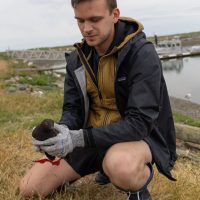
Nesting season on Protection Island is a busy time for SAFS Masters student, Liam Pendleton. Home to tens of thousands of pigeon guillemots and rhinoceros auklets, Liam travels to Protection Island in the Strait of Juan de Fuca every week from May to September to conduct research and monitoring of these seabirds.
Working in the Quantitative Conservation Lab, led by Sarah Converse, Liam is studying the link between breeding success, and marine environmental conditions. Existing as a natural wildlife refuge for 40 years, Protection Island offers an untouched habitat for researchers to explore questions to do with seabirds, with the island being closed off to the public.
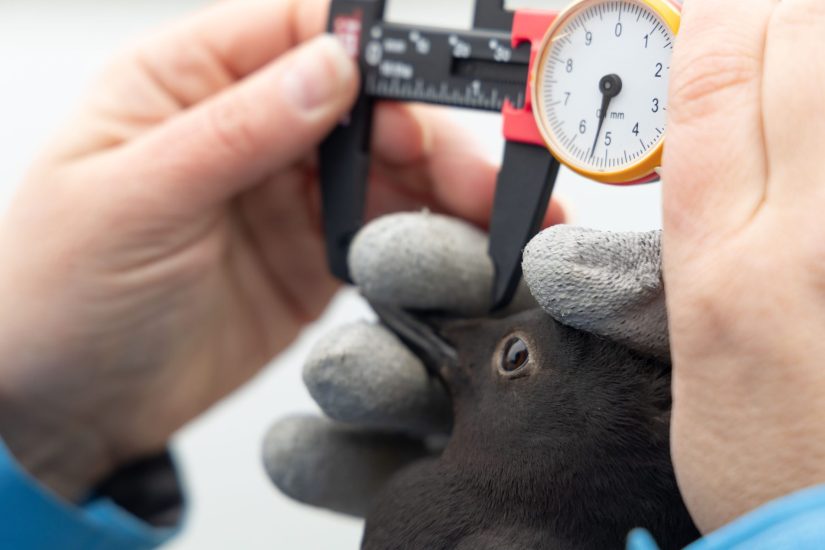
The pigeon guillemot is a seabird which forages solely in nearshore marine habitats, diving into the sea to feed on small fish and marine invertebrates. Their breeding sites are on steep bluffs or cliffs where they can burrow, or on beaches where driftwood provides cover for their nests. Building on a dataset which has been running since 1996, Liam is part of a project which lays nest boxes along the beach on Protection Island, and these are then used by pigeon guillemots to hatch their chicks.
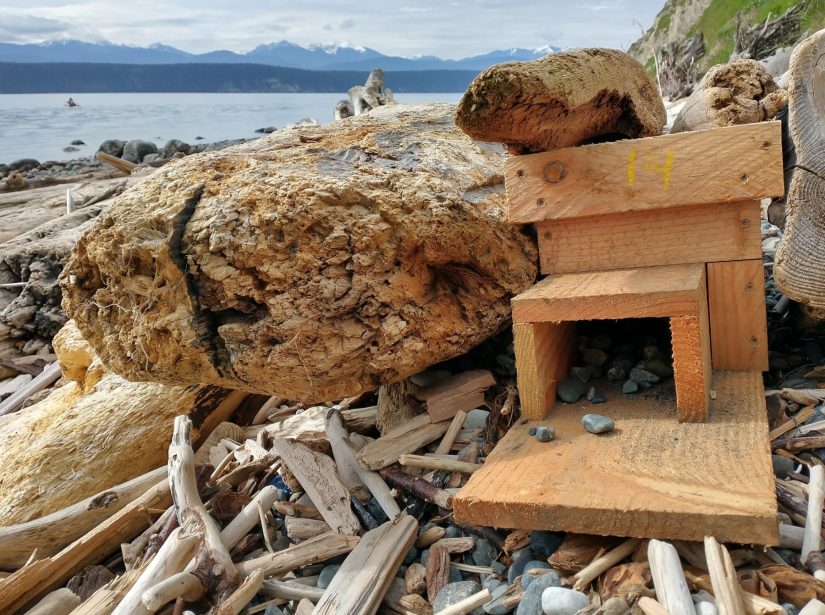
Starting in May 2023, just before the breeding season began, Liam placed 45 nest boxes at different sites around the island and began his monitoring. Visiting weekly, he records what is happening in the nests – are they occupied? Have eggs been laid and how many? The truly exciting part comes when chicks are born. Liam measures their wing length, beak length and weight on each visit, and this growth is recorded throughout their early life until they become fledglings and leave the nest.
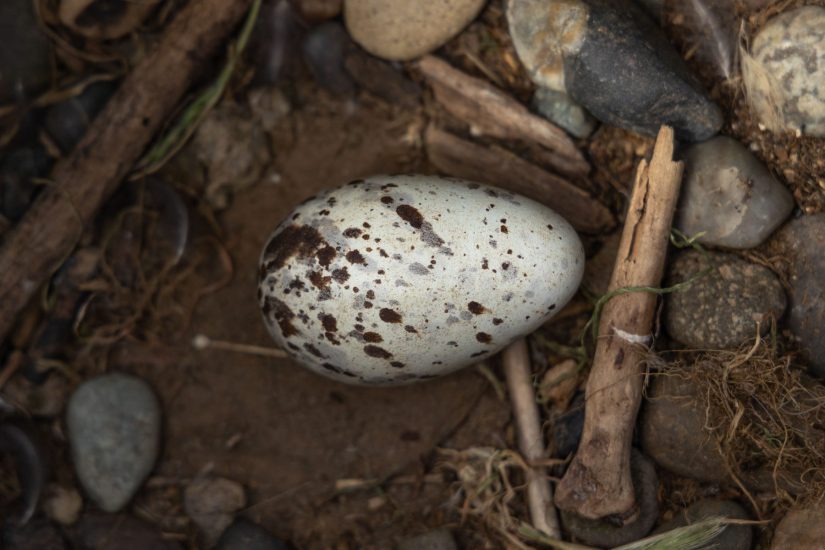
One of the big questions during Liam’s work is how to assess whether a nest is a success or a failure? Some methods have focused on an index of body condition, i.e., weight and wing length, but Liam is also looking at length of time a chick spends in the nest box. How many days does it take for each nest from hatching to fledging? The number can range from as early as 29 days up to 54 days. This time span is dependent on factors such as the quality of food and the amount of feeding provided by the parents.
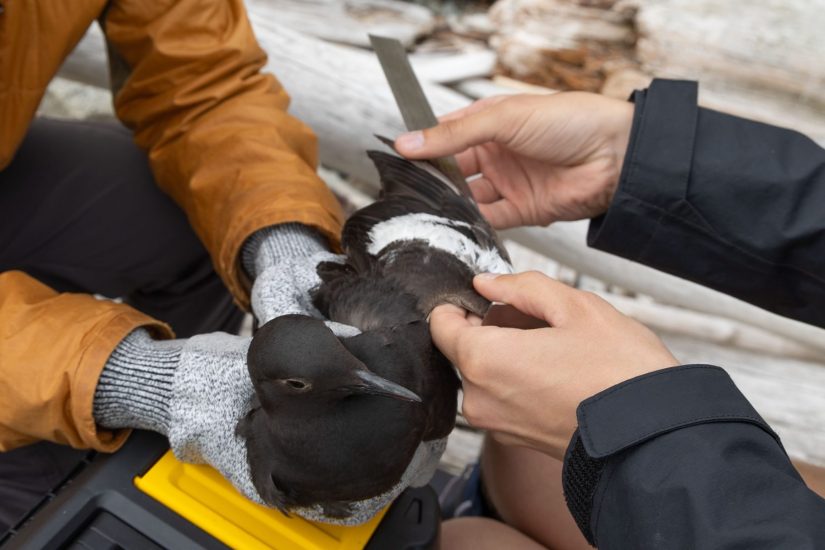
He’s also relating oceanographic trends with nesting success. How do regional marine conditions such as sea surface temperature and indices of upwelling influence this success? And looking more broadly, how do factors such as the Pacific Decadal Oscillation, El Nino or oceanic productivity play a role? Seabird population dynamics are tightly linked with conditions in the habitats they forage in, and marine environmental conditions directly influence the quantity and quality of the resources they need to survive and reproduce. Understanding the role these factors play in determining nesting success is key to understanding long-term seabird population dynamics on Protection Island.
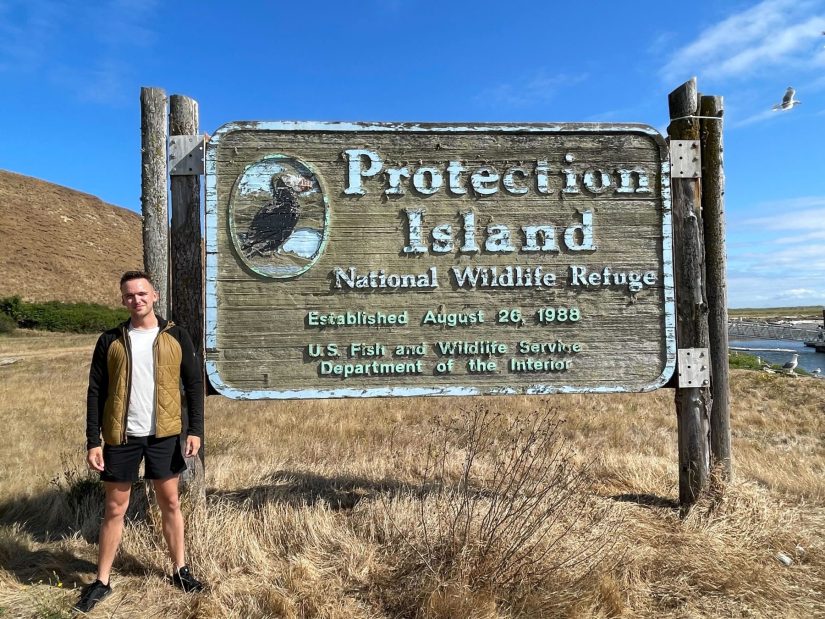
This is just one part of Liam’s work. Check back in soon to hear about his GPS tagging and monitoring of one of the largest populations of rhinoceros auklet in the world, located on Protection Island.